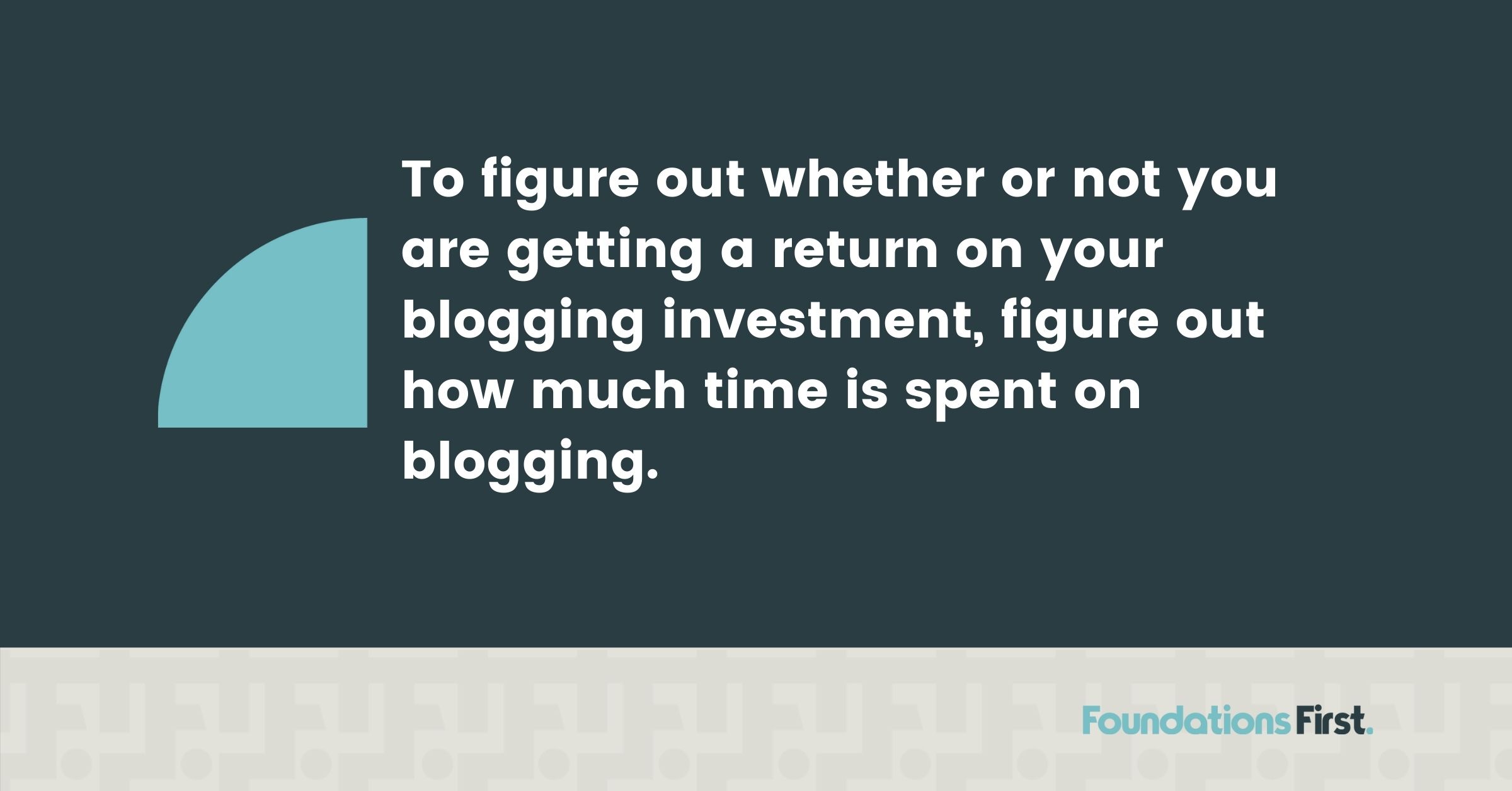What’s Your Blog ROI?

I’m going to be a blog-post buzz kill and ask you a hard question. You know that blog you posted six months back? The one with awesome content; the one laser focused on your target market and nicely sprinkled with hip graphics? What’s your blog ROI on that piece of content? No idea?
If you can’t answer that question, don’t feel alone. Even though blogs are an important tactic in a B2B’s overall digital marketing strategy, they often go unexamined. Yes, blogs help you direct traffic to your website. And blogs can help you build brand and industry cred. A good blog post can even generate leads. But when it comes to knowing if your blog is truly helping you meet your goals, it’s all a bit foggy. Here are some tips to help you assess whether you’re getting a return on your blog investment.
1. Do A Quick Self Survey
Let’s start your blog assessment with a few simple questions for self-reflection. We encourage you to write down your answers. That helps when you need to have a little chat with yourself.
- What was your most popular blog in terms of page views last year?
- How many page views did you get for all blog posts last quarter?
- Do you know if your blog posts are successful? How?
- What methods to you use to monitor the success of your blog?
If you can answer all the questions, you’re pretty on top of the blog thing. Congrats! Are you a little iffy when it comes to 3 and 4? Read on.
2. Longer Content Is The Rule Not The Exception
Blogs have increased in length over the past several years, in part because longer content is more SEO-friendly. Longer blogs require more of an investment in time. And spending more time writing a blog appears to correlate with a blog’s results. According to an Orbit survey, about one third of bloggers who spent 6+ hours on a post reported “strong results,” whereas only a quarter of bloggers who spent less than 6 hours reported “strong results.” This speaks more to quality than quantity, but both take time.
3. Figure Out Your Blogging Time And Costs
To figure out whether or not you are getting a return on your blogging investment, figure out how much time is spent on blogging. Here are the steps you need to include:
- Research and draft the blog. Each blog writer is different, and topics vary as to how long it takes to craft a good blog, so talk to your blogger for an average. Figure 3 to 4 hours on average.
- Create graphics and images for multiple social media posts (1 hour).
- Write social media posts to promote the blog article (45 minutes).
- Optimize the blog post for search engine optimization (SEO) (15 minutes). Good writing should do a lot of this with keywords, titles, and blog structure.
- Finalize the blog and social media posts (30 minutes).
- Publish/code blog post (20 minutes).
- Submit to Google Search Console for indexing (5 minutes).
- Schedule posts on social media platforms (10 minutes).
- Boost posts on social media/pay per click (20 minutes).
Now, total up those hours, and when you multiply that number by labor costs, you have something to work with.
Note these estimates are not set in stone. We follow a more promotion-heavy formula for content. Michelle Tresemer, Co-founder of Foundations First marketing, advises spending 20% of your time creating the content and 80% distributing it.
4. Figuring Out Revenues Is Trickier
The second part of the equation is figuring out your revenues associated with the blog. That’s a lot trickier. After all, your blog’s monetary value is in its ability to cause readers to follow the cheese to a conversion. For a B2B company, that’s probably a lead. Plus, the blog works with social media. For a more defined, 9-step formula to help you examine your blogging costs and whether or not they justify the money and time involved, I highly recommend “Calculate Your Blogging ROI in 9 Steps.” The piece takes you through an understandable yet comprehensive blogging expense calculation that includes writing, editing, tracking, and managing stages. This article is especially good because it forces bloggers to think in terms of the value of customer behaviors. For blogs, these need to be calculated over the long-term.
Your Blog ROI Should Be Watched Closely
Like any other aspect of your business, your blog should be closely monitored for its costs and returns. A blog provides a way for you to target potential clients, boost your website traffic, and distinguish yourself in a crowded industry. Your blog is a great way to convey your company’s values. Blogs are also a way for you to keep tabs on what your readers care about. If you “listen” carefully to your audience by watching data, you’ll know how to adjust in the market.
Cindy Powell
Categories
- Analytics and Measurement
- Brand Messaging
- Competitor Analysis
- Content Marketing
- Digital Marketing Strategy
- Digital PR & Events
- Marketing Budgets
- Marketing KPIs
- Marketing News
- Marketing Rock Samples
- Marketing Staffing & Vendors
- Marketing Strategy
- Marketing Tech Stack
- Podcast
- Product Marketing
- Sales Marketing Alignment
- SEO
- Social Media
- Strategic Marketing Partnerships
- Target Markets
- Uncategorized
- Vision & Purpose
- Webmaster








